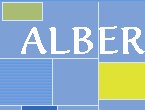|
your browser does not support
javascript!
People of many chiefs
-
The Blood, or Kainai, are one of three tribes, along with the
Peigan and Blackfoot, that make up the Blackfoot Nation. Derived
from the Blackfoot term a-kainaw, Kainai means "many
chiefs" a reference to the clan system once used by the tribe.
Blood was a name used by early traders in reference to the red
ochre the Kainai used on their faces during ceremonies.
-
Blood Indian Reserve 148—Canada's largest, at 1,343 square
kilometres— was established in 1880, three years after the
signing of Treaty No. 7. A second reserve, Blood Indian Reserve
148A, measuring 19.7 square kilometres, is adjacent to Waterton
Lakes National Park near the Canada-U.S. border.
-
The Blood population is 9,097 in total; 7,448 live on the
reserve, most in and around Stand Off.
-
Agriculture is the band's main source of income. Grain, wheat,
barley, canola and alfalfa are grown on 61 hectares on the reserve
and harvested under contract by non-native farmers. The Blood
Tribe Irrigation Project covers 13,365 hectares of land under
irrigation in what is called the Big Lease area. Some of the hay
grown there is exported to Japan.
-
The Blood Band Ranch, located at the north end of the reserve,
runs 500 head of cattle. The ranch also contains several square
kilometres of unbroken moist mixed-grass prairie, a rarity in
Western Canada, where most has been plowed under for agriculture.
-
The main employers are the Blood Tribe administration, with a
staff of 300, and the provincial department of health, which
employs 200 (these numbers double in the summer).
-
The reserve has several small businesses, a human-resources
building, a fire hall, a police station and five schools: three
elementary, one high school and Red Crow Community College.
Reprinted with the permission from George
Webber and Canadian Geographic (July/August,
2001): 52-63.
|
 Heritage Community Foundation Presents
Heritage Community Foundation Presents






 Heritage Community Foundation Presents
Heritage Community Foundation Presents